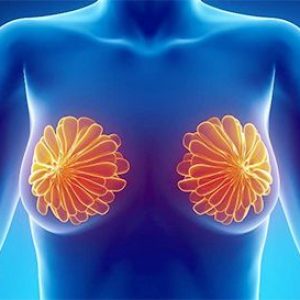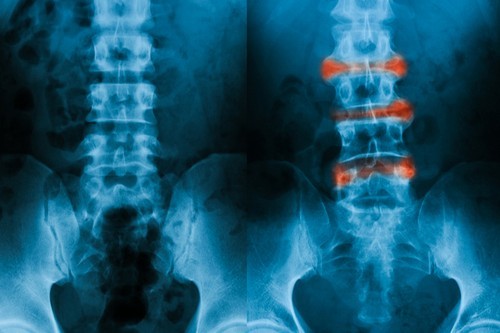Modern laboratory diagnosis provides doctors with opportunities for detecting malignant diseases of different localization.
The basis of such diagnostics is the measurement of the concentration in the blood of substances synthesized by cancer cells or normal tissues in response to the development of cancer process.
These substances are called tumor markers. Among them there are those that are responsible for malignant mammary tumors, in particular of the article tumor marker CA 15-3.
That shows the tumor marker CA 15-3
Cancer antigen CA 15-3 is a glycoprotein, which synthesizes predominantly carcinoma of the breast. Healthy people is a substance that is produced by secreting cells in different organs, but in a minimal quantity, which is not captured used by laboratories test systems.
At the early stage of malignant disease CA 15-3 is elevated slightly, or even not defined, the active selection to blood and possibly other diseases. These factors explain the low informative value of this tumor marker in breast cancer screening – the routine testing of women should use more precise tests.
Diagnostic role of tumor marker CA 15-3 is the following:
- Its concentration is directly related to tumor size and presence of metastases. This allows the use of analysis of CA 15-3 for follow-up of patients with diagnosed breast cancer and detect recurrence of the disease after treatment.
- With the high efficiency of anticancer therapy the content of CA 15-3 in the blood falls. That is, the level of this tumor marker to judge the effectiveness of the treatment.

To obtain more accurate information about the condition of patients with suspected breast cancer or with already diagnosed malignant breast disease, analysis of the CA 15-3 is combined with the identification of other tumor markers.
Indications for analysis
Analysis of the CA 15-3 prescribed in the following cases:
- To monitor the course of breast cancer.
- To detect early recurrence of the tumor.
- For the early detection of metastases.
- To determine the effectiveness of cancer treatment.
- For the differential diagnosis of cancer and benign hormonal breast disease.
Analysis of the CA 15-3 is usually carried out not once, but several times for the assessment of this indicator. Physicians interested in growth or decline in the concentration of tumor marker in blood, and not specific numbers.
Preparation and analysis
The preparation of the study it is recommended to start a few days before going to the lab. It is necessary to exclude alcohol, cigarettes, reduce the consumption of heavy meals to limit physical activity. Also, you should discuss with your doctor, which directs the analysis, the possibility of continuing treatment, if any, is held. Before the test you cannot eat (last meal – dinner), allowed to drink only a little water. It is also impossible to analyze to undergo any other diagnostic procedures, Smoking. All of this can affect the outcome of the study.

Measuring the level of tumor marker CA 15-3 is held in the venous blood of the patient. To donate material, preferably in the morning (usually, labs are sampling up to 12 hours a day). Before donation you need to sit and relax.
Norm analysis for tumor markers СА15-3 for women
Each laboratory provides its own reference (normal) values of the investigated indicator, depending on your methods and analyzers. Therefore, the interpretation of the results of the analysis of the CA 15-3 should always be carried out in accordance with the information contained in the letterhead of the laboratory, and not in other sources.
If we consider the reference values of the analysis using the test system most commonly used in modern laboratories, they are as follows: healthy nonpregnant women of substance concentration of CA 15-3 in the blood should not exceed 25 U/ml. anything more should be considered as a deviation from the norm.
Transcript of analysis results
Diagnostic value has only indicators of the level of tumor marker CA 15-3 in the blood above normal. The reasons for the increase in concentrations of this carcinogenic antigen can be a cancer and States that do not have a malignant nature.
High content of CA 15-3 is typical for the following brain:
- Carcinoma of the breast.
- Cancer of the lung and bronchus.
- Malignant tumors of the alimentary canal, liver, pancreatic gland.
- Cancer of the reproductive system in women.
Non-malignant diseases and conditions, which may increase the level of reporting of tumor marker:
- Mastitis of the breast (where the breast can occur in benign tumors). If the tumor is benign, antigen CA 15-3 does not exceed the value of 50 IU/ml, if the same exceeds – requires more detailed examination to detect malignancy.
- Polycystic ovarian.
- Acute and chronic liver disease. The excretion of CA 15-3 antigen from the body involves the liver, therefore, in diseases of this organ, the higher concentrations of the tumor marker. However, the rate should not exceed the normal value by more than 2 times.
- Autoimmune processes.
- The third trimester of pregnancy.
During pregnancy the concentration of a substance CA 15-3 in the blood may go beyond the boundaries of the norm, but should not exceed a value of 50 U\ml. After birth this indicator should normalizerbase, if not returned to normal you must look for the cause.
The tumor marker CA 15-3 in breast cancer
Clinical studies have shown that only 20% of women with early stages of breast cancer there is an increase in the concentration of the considered antigen. In this regard, if in a breast there is a neoplasm, and the analysis of CA 15-3 does not give reliable confirmation of malignancy (concentration of analyte does not exceed the norm), to rule out cancer is impossible. The woman needs further examination, including tests for other tumor markers.

When a large cancerous tumors of the breast and the presence of metastasis, elevated levels of CA 15-3 in more than 80% of cases. And not “going wild” concentration, and the high growth rate of this indicator in patients diagnosed with breast cancer allows us to conclude that the metastasis of the tumor. The decreasing of the concentration of the tumor marker CA 15-3 in the dynamics speaks in favor of the effectiveness of the treatment. If reducing no, chemotherapy is not correct.
The treated patients the figure is CA 15-3 indicates a return of the disease, and such change results of the analysis ahead of clinical symptoms for 6-9 months. That is, with proper laboratory monitoring relapse of breast cancer can be detected and treated in a timely manner.
The frequency of surveys for antigen CA 15-3 in breast cancer is determined individually for each woman depending on the stage of the disease, treatment and other parameters. Patients should not ignore such a diagnosis, as it can help a competent oncologist may be time to suspect the returning problem and take steps to eliminate it.



